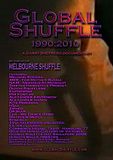Me, I've not sided with anyone based on the fact that I like different things. I couldn't think of a single theory that would fit all my favourites reasonably. (I assume this is how all the above started out as well.) But then a couple of months ago I think I figured out a decent guiding principle, which obviously is just a silly quirk which would be ridiculous to build a proper epistemology on, but it works for me.

See, I've figures out I like arts that are immersive, and dislike arts where the structure and purported source of impact is immediately and transparently obvious. The stuff I like most tends to be the stuff that makes you feel like you're inside the work and which hits you instinctively, emotionally and deeply.
At the top level would be stuff like music (of course!), architecture (in which you're very literally immersed), street art and to some extent stuff like film (where you tend to be shut off from everything not going on on the screen, augmented by turning down the house lights).
Below that would be things where you're in an artificially separated, partially alienated space away from the art. Theatre and dance with its clear physical separation (which I would argue doesn't happen in film, not least because of the sonic dimension). Computer games with their synthetic interfaces and obvious rules. Traditional art in the gallery. Poetry, with its extreme impact that's very second-degree, emotional impact that requires abstract thinking first.
At the very bottom I'd place prose literature, which I've never been particularly fond of. With this setup, I can finally explain why. It's ultimately abstracted and alienated away from the audience, being merely symbols on a page. And unlike poetry (but like computer games), prose relies on extremely transparent tropes to work - you can always recognise the wily writer behind the text, clearly pulling the strings. (Or if you're a structuralist or post-structuralist, the culturally conditioned narrative pieces falling into natural place.)
This set up tends to be a bit complicated by the fact that bits of it coincide nicely with theories of the sublime, and that I tend to quite like to pick the magic of individual pieces of art to bits, and like it more when I've done so. But still, it's a good theory for me because it really does work for all the stuff I'm fond of. Does anyone who's better versed in aesthetics than me know of a philosopher who's got similar ideas going on?










































1 comment:
Food for thought: Completely immersive art runs the risk of eliminating the space for critical reflection... try some Brecht.
Post a Comment